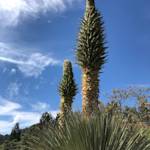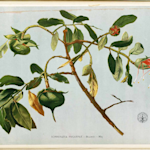Arctic willow
2024 CE • North America
"Arctic willow, scientifically known as Salix arctica, is a dwarf shrub with a unique creeping growth pattern, often forming expansive mats that radiate from a single central stem . . . The Arctic willow has developed a set of unique adaptations that allow it to flourish in the challenging conditions of the Arctic tundra. These include a shallow root structure that facilitates nutrient uptake from the thin layer of arctic soil, a spreading growth pattern that enables efficient resource acquisition, and wooly catkins that trap heat, thus aiding in survival and reproduction in the harsh cold climate . . . The Arctic willow displays a circumpolar distribution with a widespread presence throughout the Arctic region . . . Salix arctica is a highly adaptable species that requires full sunlight for optimal growth but can survive in a wide array of environments, both wet and dry. Its habitats range from wet sedge meadows, dry heath tundra, and rocky ridges, to sandy or gravelly river terraces, floodplains, and stabilized sand dunes . . . This adaptability allows the Arctic willow to thrive in diverse conditions, contributing to its broad geographic distribution." The Arctic willow holds significance both within culture and its habitat. "The Arctic willow holds a significant place in the cultural practices and survival strategies of the Inuit and the Gwich’in tribes. The Inuit have named the plant ‘Suputit’ when it’s in the stage of seeding, and its young leaves, known as ‘uqaujait’, were traditionally consumed along with blubber . . . In addition to its dietary uses, the twigs of the Arctic willow serve as an important source of fuel, and the withered flowers, known as suputiit, are combined with moss to create the wick for the kudlik, a traditional oil lamp . . . Beyond human use, the Arctic willow is also an important food source for arctic wildlife such as muskox and hares, indicating its crucial role in maintaining the ecosystem of the Arctic."
Lee Petersen, "Arctic Willow," August 28, 2020.
Image: Matt Lavin via Flickr, CC BY-SA 2.0 DEED, Attribution-ShareAlike 2.0 Generic


Learn about Maya Lin’s fifth and final memorial: a multi-platform science based artwork that presents an ecological history of our world - past, present, and future.

Discover ecological histories and stories of former abundance, loss, and recovery on the map of memory.

Learn how we can reduce our emissions and protect and restore species and habitats – around the world.

See how art can help us rethink the problems we face, and give us hope that each one of us can make a difference.

Help make a global memorial something personal and close to home. Share your stories of the natural world.


